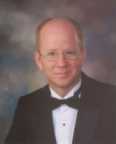|
Choral Diction by |
General Rules for Choral Diction
-
Sing every vowel with absolute clearness. Do not allow vowel to change.
-
Be accurate: place all consonants and vowels on an exact place in the beat.
-- Place the vowel (or exploded consonant) at the beginning of the beat.
-- All other sounds happen before the beat.
-- Closing consonants are best placed on downbeats but can be on upbeats.
-
Listen for closing Sssss's and Ttttt's
-
Voiced consonants consonants that carry a pitch (m, n, v).
-- At the beginning of the word make sure it is the same pitch as the note.
-- Take time for closing voiced consonants.
-
Higher pitches require some modification of the vowels. The higher the pitch the more open the vowel must be. Vocal production takes precedence over precise diction on high pitches.
-
Let the natural stresses of words dictate how they are sung.
|
 |
You need to find some way to unify their understanding of what vowel sound they should be using. A choir that does not sing unified vowels does not sing in tune.
| If you would like to be added to the TSMP Email Mailing List and receive periodic notifications of new articles and updates to this website, then please email TSMP.
The Texas School Music
Project is a source for ideas and information
concerning pedagogical
practices in the music classroom or rehearsal hall. The TSMP is a service provided to
all music specialists by the faculty
of
the Department of Music
at Stephen F. Austin State University. Copyright © 2002, Department of Music at Stephen F. Austin State University |
